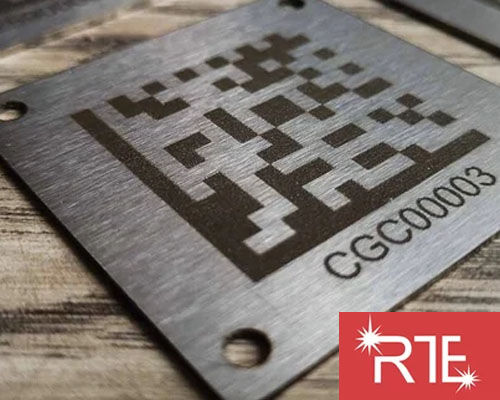2D Laser Marking Service in Chennai
2D Laser Marking Service in Chennai–Royal Tech Engineering provide a top-quality 2D Laser Marking Service in Chennai
2D laser Marking Service in Chennai-Royal Tech Engineering is the leading Laser cutting is an amazingly flexible productive technology. A wide variety of materials and thicknesses can be processed, with no limit to the shape you can obtain. Its programming is so fast that any modification can be applied at any stage of production, practically without additional cost and time. Precision is highest, cutting quality is excellent and no distortion of parts occurs. The best application of laser technology is the processing of metal materials (mild steel, stainless steel, aluminum, copper, and brass) with a thickness from 0.8 mm to 30 mm.
The productivity of this technology can be further enhanced by the wide range of modular automation solutions that can help manage the entire production cycle and the technology suites of options to adapt laser cutting to specific customer requirements.
Laser Marking 2d Codes
A two-dimensional barcode is a matrix composed of black modules arranged inside a white square pattern. There are different types of 2D barcodes and they can be decoded either using a Smartphone or using specific readers.
Before going into the more detail on modern 2D codes, it is worth mentioning that their predecessors were the alphanumeric serial codes, used for decades due to being very simple and easily read.
The first barcodes were introduced in the 40s and are still used on many retail products. The fact that they can be read automatically reduces checkout times and the risk of errors. Barcodes have been a real revolution for small and large producers throughout the last century.
Despite this, the problem related to the amount of information to be encoded has arisen since the 80s due to the fact that barcodes are only able to contain a limited amount of data. To overcome this problem, two-dimensional codes were introduced to the market and this often removes the need for separate external databases.
FAQ’S?
What does laser marking do?
Laser marking can mark a variety of materials such as steel, aluminum, stainless steel, polymers, and rubber.
Is laser marking permanent?
In simplest terms, laser marking is a permanent process that uses a beam of concentrated light to create a lasting mark on a surface. Typically performed with a fiber, pulsed, continuous wave, green, or UV laser machine, laser marking encompasses a wide variety of applications.
How is laser cutting priced?
The laser cutting costs are based on the time your file takes to cut in the laser.
How deep is laser marking?
When it comes to deep engraving, the depth can easily reach a few millimeters into metals.
How fast is laser marking?
Laser marking machines have always been considered very fast devices at various marking speeds, but they also have limitations. The theoretical speed of the manufacturer is 9000mm/s, and some marking opportunities are lower than this speed, about 7000mm/s.
Can laser engraving fade?
Soft metals such as copper, brass and aluminium are more prone to engraving fading than harder metals such as stainless steel and other materials. For glass engraving, the quality of the glass will affect longevity.







